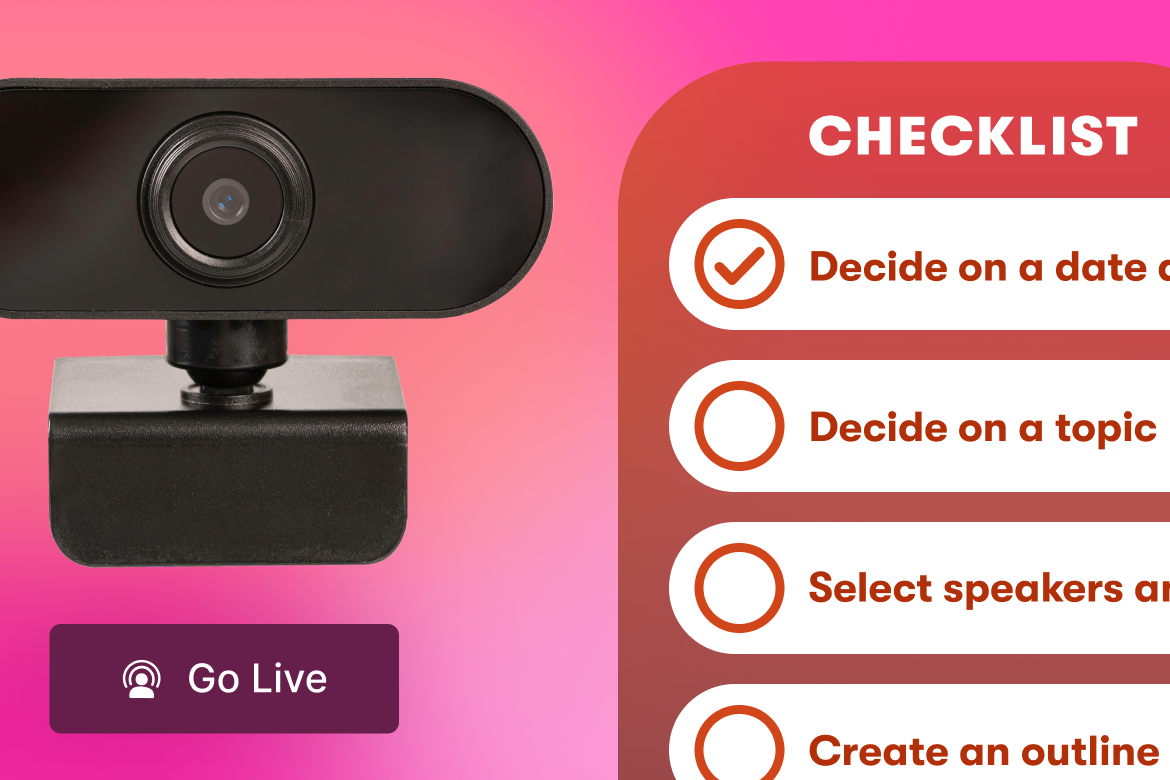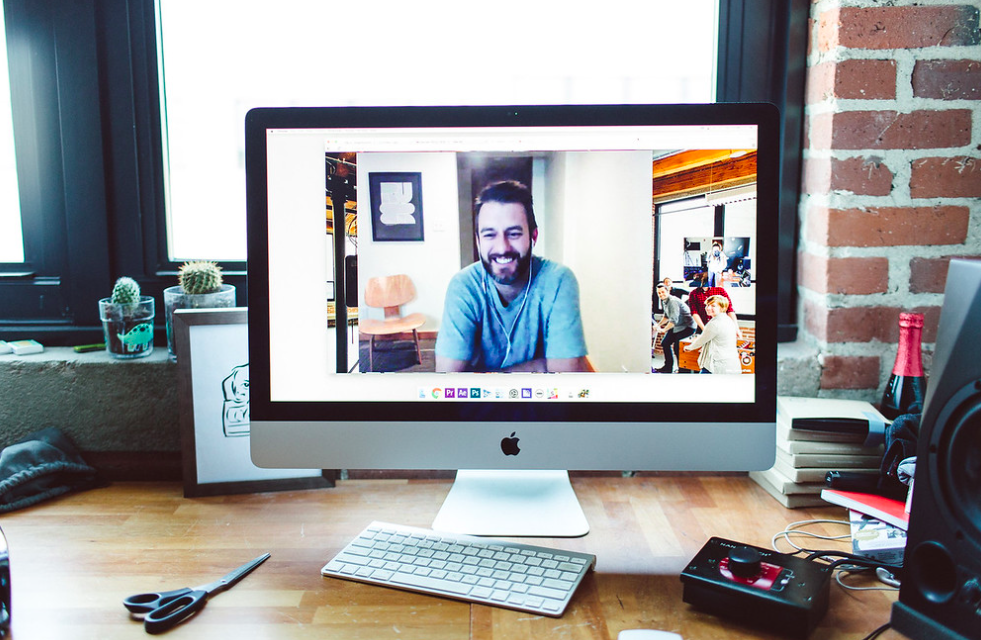How to Look Good on Camera When Hosting a Webinar
Get practical tips on nailing your outfit, framing your shot, and more.
January 24, 2025
Topic tags

Have you ever looked at yourself during a webinar and instantly regretted turning on your camera? Maybe the lighting was off, your outfit clashed with the background, or you just couldn’t figure out where to look.
Don’t worry — we’ve all been there.
The good news is that looking great on camera isn’t rocket science. All you gotta do is follow these practical tips on nailing your outfit, framing your shot, and more:
Dressing for the camera
1. Wear a solid color that contrasts with the background
On camera, contrast is king. Light colors work best with darker backdrops, while jewel tones (like ruby red, emerald green, and sapphire blue) pop against neutral backdrops.
Solid colors are always a safe bet because they keep the focus on you. Patterns, stripes, or checks might look great in person, but on camera? They’re a visual headache and can create those weird moiré effects that make your viewers squint.
2. Keep accessories minimal
Sure, your chunky necklace, fancy watch, or quirky tie might make a statement, but it’s not the statement your audience came for. Keep your accessories minimal and understated so all the focus stays on your message.
Framing your shot
3. Set the camera just above eye level
This angle flatters your face and avoids those awkward upward shots (hello, nostrils and double chin). Prop up your camera or laptop with a tripod or even a stack of books, and you’re good to go.
4. Sit about an arm’s length from the screen
Too close, and it feels like you’re invading everyone’s personal space. Too far, and you might as well be a tiny dot on the screen. An arm’s length is the sweet spot, and it keeps your proportions natural and avoids lens distortion.
5. Leave a bit of space between your head and the top of the frame
Headroom can make or break how balanced your shot feels. Leave just enough space between the top of your hair and the frame. Too much, and it looks like you’re sinking. Too little, and it feels cramped.
A general rule of thumb is to leave about three or four finger-widths of space between the top of your head and the edge of the frame. You can also try positioning your eyes about one-third of the way down from the top of the frame.
Projecting confidence with your body language
6. Sit or stand up straight
Good posture is like an instant confidence boost — great for when you’ve got pre-event jitters — and it makes you look authoritative and energized. Whether you’re sitting or standing, keep your back straight and your shoulders relaxed.
7. Gesture with your hands
This is a great way to add energy and emphasis to your message. Natural, expressive movements can help engage your audience. Just try not to give ‘em a one-person jazz hands show!
If gestures don’t come naturally to you, that’s okay. Just try to maintain open body language. Keep your shoulders open and avoid crossing your arms or hiding your hands in your pockets or behind your back.
8. Make eye contact with the camera
Eye contact is key to building trust and connection — even on camera. To nail it, look right at the camera lens or move your notes or teleprompter to the top of the computer screen to make it appear like you’re looking at the camera.
Glance away naturally every so often, and look to the side and down, not up. That way, you look thoughtful and it doesn’t seem like you’re rolling your eyes.
Sounding calm and confident
9. Warm up your voice
Your voice sets the tone — literally — so give it some love before you go live. A quick vocal warm-up with hums or tongue twisters can work wonders to loosen your vocal cords and get rid of any morning grogginess.
And stay hydrated! Sip some warm or cool water (not ice cold) before and during your webinar to keep your voice clear.
10. Practice pacing and tone
Your speaking style can make all the difference in keeping your audience engaged. Aim for an authentic, conversational pace. Too fast, and you’ll overwhelm your audience. Too slow, and your audience will tune out.
Emphasize important points with slight changes in pitch or volume. A bit of variation keeps your delivery interesting and natural.
11. Control your breathing
Your breathing plays a big role in how calm and confident you sound. Practice taking deep, steady breaths to stay composed and avoid that rushed, out-of-breath tone.
Remember to pause briefly between sentences. These little breaks give you a chance to breathe and help emphasize your points.
Your equipment matters
All these tips can only take you so far if your equipment isn’t up to par. Good lighting, a quality camera, and a nice microphone are the foundation for looking and sounding great on camera.
Not sure where to start? Check out these resources:






